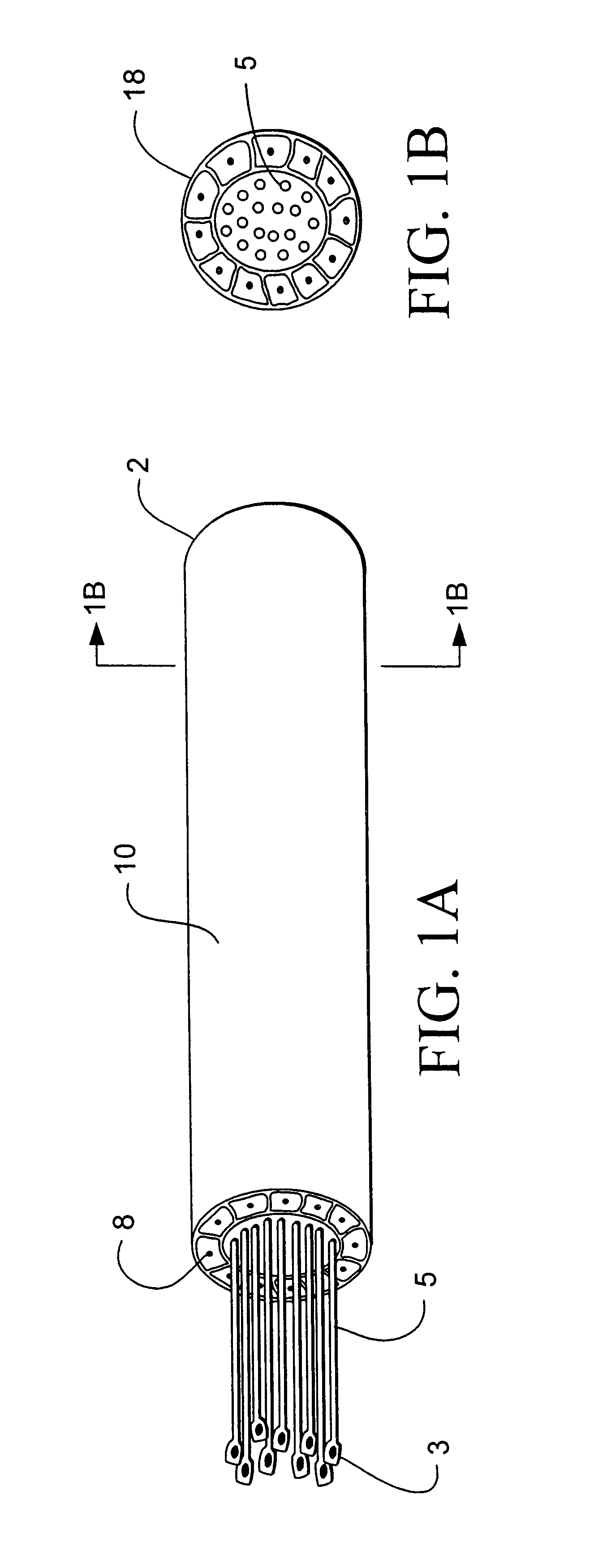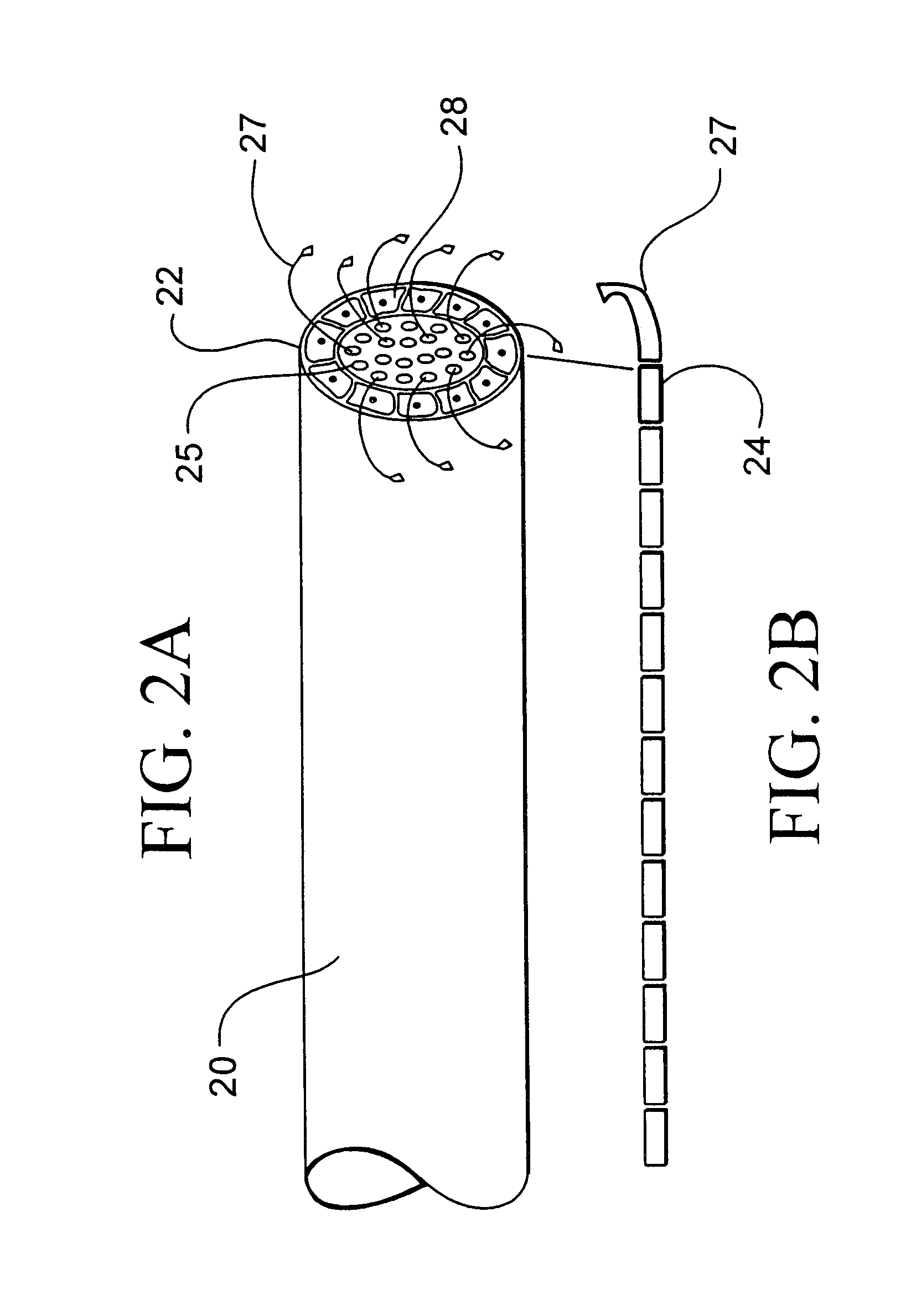Method and apparatus for stimulating nerve regeneration
a nerve regeneration and nerve technology, applied in the field of nerve regeneration methods and apparatuses, can solve the problems of degeneration of the distal parts of the axon and dendrites, inability to form new nerve cells, and inability to stimulate nerve regeneration
- Summary
- Abstract
- Description
- Claims
- Application Information
AI Technical Summary
Problems solved by technology
Method used
Image
Examples
Embodiment Construction
In experiments where animals are treated by using the method and apparatus according to the present invention, a 1 cm segment of the sciatic nerve was severed. Upon reexamination several weeks after sciatic nerve dissection a majority of subjects were found to have significant extension (greater than 1 cm) of the severed nerved. Untreated controls demonstrates only minimal growth and in some instances neuroma formation. Extension of dendrites is thereby promoted outward from the severed nerve.
The dendrites are stimulated along the entire course of the distal end of the nerve that is treated. Each part then is stimulated to grow out and a telescoping effect is achieved. This extends dendrite growth across at a much greater or more rapid rate then by just stimulating the end of the nerve.
Stimulating the distal segment of the nerve instead of just the terminus with non-ablating energies stimulates a greater portion of the nerve without denaturing the nerve. There is some shrinkage and ...
PUM
 Login to View More
Login to View More Abstract
Description
Claims
Application Information
 Login to View More
Login to View More - R&D
- Intellectual Property
- Life Sciences
- Materials
- Tech Scout
- Unparalleled Data Quality
- Higher Quality Content
- 60% Fewer Hallucinations
Browse by: Latest US Patents, China's latest patents, Technical Efficacy Thesaurus, Application Domain, Technology Topic, Popular Technical Reports.
© 2025 PatSnap. All rights reserved.Legal|Privacy policy|Modern Slavery Act Transparency Statement|Sitemap|About US| Contact US: help@patsnap.com



